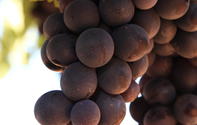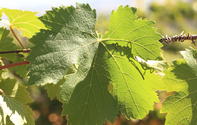Description
Cinsaut noir is a wine grape variety primarily used for the production of red and rosé wines, but also brandies and port. DNA analysis has indicated that it might be an offspring of Rivairenc. The identity of the other parent is still uncertain.Origins
Cinsaut noir is a Mediterranean variety. It has been produced in the south of France, specifically the Languedoc-Rousillon region, since the mid-1600s, primarily as a blending grape.Other Names
It has numerous other names, with Cinsault being the most common alternative. It was known as Hermitage in South Africa, until Dr Abraham Izak Perold of Stellenbosch University in 1927 proved it to be the same variety as the Cinsaut noir of the south of France.Production in South Africa
The variety has been produced in South Africa since the 1850s and formed the backbone of the red wine industry until the 1960s because of its ability to produce high yields. Initially, it was used to produce bulk wines, but later also some of South Africa’s top blends. It was the most planted red variety for a long time, with more than six times the vines planted for any of the other top six red wine varieties in 1976.
The variety nevertheless fell out of favour around the 1990s as winegrowers became more focussed on the production of fine quality wines, resulting in Cabernet Sauvignon, Shiraz and Pinotage toppling Cinsaut noir from its position as the most planted variety.
The variety has enjoyed renewed interest over the past few years as a new generation of winegrowers started experimenting with new styles and ways of producing Cinsaut wines, proving that the variety has the potential to produce excellent elegant wines when managed properly.
The area under production has nevertheless continued to decline, with Cinsaut today representing less than two percent of the total area under wine grape production. In 1925, it was crossed with Pinot Noir to produce the truly South African variety, Pinotage.
Production Regions
Paarl and the Breedekloof have the largest areas under Cinsaut noir production followed by the Swartland, where it has been dubbed the “Pinot noir” of the region because of the good quality wines produced from it there.Growth and Ripening
The variety is a moderately vigorous grower with a creeping style and thin shoots. It may be produced on a trellis system or as bush vine. It has a high production potential, varying between 16 t/ha to 20 t/ha, but yields should be limited if the aim is to produce good quality wines. Grapes ripen mid-season, from the first half of March.
Berries and Leaves
The berries are considerably larger than berries of other red grape varieties. They have a dark blue colour when produced under fertile conditions and become even darker, almost black, when produced under less vigorous conditions. The skin is thick and tough, while the flesh is juicy. Leaves are round, five lobed and have a light to medium green colour.


 South Africa’s oldest red wine vineyard is a block of Cinsault in Wellington, which now produces a part of the ground-breaking Leeu Passan...
South Africa’s oldest red wine vineyard is a block of Cinsault in Wellington, which now produces a part of the ground-breaking Leeu Passan...